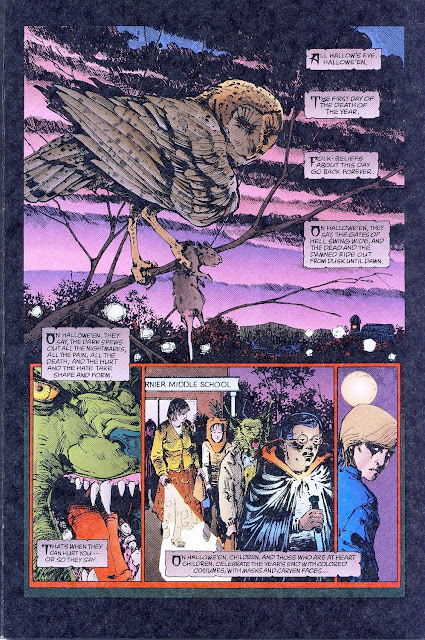Book Review: 'Autumn Angels' by Arthur Byron Cover
3 / 5 Stars
It’s Autumn, and thus, as good a time as any to read ‘Autumn Angels’. I remember seeing the book on the shelves back in 1975 but, a bit more wary back then when regarding obviously New Wave content (an attitude earned by more than a few disappointments), I didn’t pick it up. Copies of the original paperback are still to be had from secondhand book dealers, and the Babbage Press has released a trade paperback version of several of Cover’s works, including ‘Angels’.
In the 70s Arthur Byron Cover had considerable momentum as an up-and-coming writer of what was then termed ‘speculative fiction’, but nowadays tends to be labeled ‘fabulist’, or perhaps ‘absurdist’, fiction. I recall reading his short stories (such as ‘The Day It Rained Lizards’ ) from the DAW’s The Year’s Best Horror Stories anthologies. He also had a short story in the April 1979 issue of Heavy Metal magazine titled ‘In Between Then and Now’.
‘Autumn Angels’ was Cover’s first novel, published in 1975 under Pyramid Book’s ‘Harlan Ellison Discovery Series’ imprint.
'Angels’ features a great cover by Ron Cobb. [‘Angels’ is rare among SF paperbacks in that there is a bio sketch of Cobb, the artist, included at the front of the book]. Depicted in the foreground are (from top to bottom) the hawkman (flying); the demon; the fat man (i.e., Kasper Gutman from the crime novel The Maltese Falcon, played by Sydney Greenstreet in the 1941 movie); and the lawyer (i.e., ‘Ham’, or Theodore Marley Brooks from the Doc Savage novels).
There is also the usual self-serving, protracted Introduction by Ellison, in which he relates some particulars about author Cover, then only 25. Ellison clearly was in proselytizing mode at the time of publication, seeking to use his ‘Discovery Series’ imprint to try and bring more converts to the New Wave movement still au courant in SF. This was not necessarily an easy thing, for by ’75, increasing numbers of fans were beginning to tire of the self-indulgence of the New Wave movement.
So how does ‘Autumn Angels’ stack up as a late-New Wave period novel ? All things considered, not too badly.
The book’s premise is that far in the future, the earth is peopled by a few million humans with god-like powers. With omnipotence comes boredom, and a confused, unarticulated longing for some sort of Meaning to one’s existence.
The demon, the fat man, and the lawyer are searching for some means of injecting new emotions and new ways of thinking into this twilight culture. Much of the book’s plot revolves around their machinations to bring about genuine change to the world of godlike men.
It goes without saying that as a work of speculative fiction, ‘Angels’ lacks any of the tropes of conventional SF. There are no spaceships, time travel devices, ray guns, computers, etc. There is little in the way of drama or conflict injected into the narrative, and the plot unfolds with an unhurried, deliberate pacing.
Much of the book’s content revolves around conversations and odd encounters between the central trio and other characters, all of whom have a close resemblance to well-known individuals from popular fiction. There are existential musings, and little episodes suffused with dry humor, but none of the big-screen events that are intrinsic to more representative novels of the SF genre.
‘Autumn Angels’ represents in one novel the good and the bad of the New Wave approach to writing SF. On the one hand, it brings an irreverent attitude to the interactions among a cast of characters near and dear to SF fans, in a topsy-turvy setting with its own quirky appeal.
On the other hand, it’s difficult to see how the book will appeal to today’s SF readership. Most of the book’s allusions to pop culture characters will draw blanks from any reader under 40, and the underlying philosophical message of the novel is undermined by an ending that, to me at least, struck a contrived note.
‘Autumn Angels’ is best recommended to readers of the sub-genre of SF occupied by Douglas Adams’s The Hitchhiker’s Guide to the Galaxy, or Terry Pratchett’s ‘Discworld’ novels.
Cover wrote two sequels to ‘Angels’, the story collection The Platypus of Doom and Other Nihilists (1976) and An East Wind Coming (1979). His other work over the past decade has been novelizations based on franchises, such as the ‘Rising Stars’ trilogy.
Cover currently manages the Infinite Worlds website, an online bookstore specializing in SF and fantasy.

























































.jpg)















